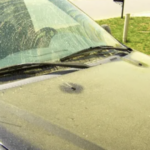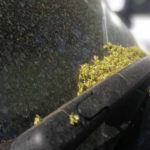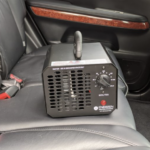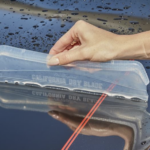Clay Bar Magic: The Science Behind Removing Contaminants for a Flawless Finish
When it comes to achieving a showroom-quality finish for your car, few detailing techniques are as effective—or as fascinating—as the clay bar treatment. This process, often referred to as “claying,” is a game-changer for car enthusiasts and everyday drivers alike. But what exactly makes clay bar treatments so magical? In this article, we’ll dive into the science behind clay bar detailing, exploring how it works, why it’s essential, and how it can transform your car’s appearance.
What is a Clay Bar Treatment?
A clay bar treatment is a detailing process designed to remove embedded contaminants from your car’s paint surface. Over time, your car accumulates dirt, dust, brake dust, industrial fallout, and other pollutants that washing alone can’t eliminate. These contaminants bond to the paint, creating a rough texture that dulls the finish and makes it prone to damage.
Clay bar treatments use a specialized automotive clay bar, which is a malleable, putty-like substance, to lift these contaminants from the surface. When combined with a lubricant, the clay bar glides over the paint, safely pulling out impurities without scratching or damaging the finish. The result is a smooth, glass-like surface that’s ready for waxing, sealing, or polishing.
The Science Behind Clay Bar Treatments
At its core, the science behind clay bar treatments revolves around adhesion and friction. The clay bar’s unique composition allows it to grip and remove microscopic particles that are stuck to your car’s paint. Here’s how it works:
- Adhesion: The clay bar is designed to be slightly sticky, allowing it to bond with contaminants on the paint surface. As the clay is moved across the lubricated surface, it adheres to particles like tree sap, tar, and industrial fallout, pulling them away from the paint.
- Abrasion: While the clay bar is gentle on your car’s finish, it creates just enough friction to dislodge stubborn contaminants. The lubricant reduces the risk of scratching, ensuring that only the impurities are removed.
- Surface Tension: The lubricant used during the process helps break the surface tension between the contaminants and the paint. This makes it easier for the clay bar to lift the particles away, leaving behind a clean, smooth surface.
Together, these principles make clay bar treatments an incredibly effective way to restore your car’s finish. But to truly appreciate the magic of claying, it’s important to understand the types of contaminants it removes and why they’re so harmful.
Common Contaminants Removed by Clay Bar Treatments
Your car’s paint is constantly exposed to a variety of environmental pollutants. Over time, these contaminants can bond to the surface, creating a rough texture that’s not only unsightly but also damaging. Here are some of the most common contaminants that a clay bar treatment can remove:
- Brake Dust: Tiny metal particles from brake pads can embed themselves in your car’s paint, especially on the wheels and lower body panels.
- Industrial Fallout: Airborne pollutants from factories and power plants can settle on your car’s surface, causing rust spots and discoloration.
- Tree Sap and Pollen: These sticky substances can adhere to your car’s paint, attracting dirt and grime.
- Road Tar: Asphalt particles can splatter onto your car, creating stubborn black spots that are difficult to remove.
- Water Spots: Mineral deposits from hard water can etch into the paint, leaving behind unsightly marks.
By removing these contaminants, clay bar treatments not only improve your car’s appearance but also protect it from long-term damage.
The Benefits of Clay Bar Treatments
Clay bar treatments offer a wide range of benefits that go beyond just a cleaner car. Here’s why this detailing technique is a must for any car care routine:
- Smoother Surface: After a clay bar treatment, your car’s paint will feel as smooth as glass. This not only enhances its appearance but also makes it easier to apply wax or sealant.
- Improved Paint Protection: By removing contaminants, clay bar treatments help prevent scratches, swirl marks, and other damage that can occur when dirt particles are rubbed into the paint.
- Enhanced Shine: A clean, smooth surface allows light to reflect evenly, giving your car a deeper, more vibrant shine.
- Better Adhesion for Wax and Sealants: Wax and sealants adhere more effectively to a contaminant-free surface, ensuring longer-lasting protection and a more polished finish.
- Preserved Resale Value: Regular clay bar treatments help maintain your car’s appearance, preserving its resale value over time.
How to Perform a Clay Bar Treatment
While clay bar treatments are often performed by professional detailers, they can also be done at home with the right tools and techniques. Here’s a step-by-step guide to claying your car:
- Wash Your Car: Start by thoroughly washing your car to remove loose dirt and debris. This ensures that the clay bar can focus on embedded contaminants.
- Choose the Right Clay Bar: Automotive clay bars come in different grades—fine, medium, and aggressive. For most cars, a fine or medium-grade clay bar is sufficient.
- Apply Lubricant: Spray a generous amount of detailing lubricant onto the section of the car you’re working on. This reduces friction and prevents scratching.
- Glide the Clay Bar: Gently glide the clay bar over the lubricated surface using light pressure. Work in small sections, folding the clay bar frequently to expose a clean surface.
- Inspect and Repeat: After each section, inspect the paint for smoothness. If it still feels rough, repeat the process until the surface is smooth.
- Wipe and Protect: Once the entire car has been clayed, wipe it down with a microfiber towel to remove any residue. Follow up with wax or sealant to protect the freshly cleaned surface.
Common Myths About Clay Bar Treatments
Despite their effectiveness, clay bar treatments are often misunderstood. Let’s debunk some common myths:
- Myth: Clay Bars Scratch Your Car’s Paint.
Fact: When used correctly with a lubricant, clay bars are safe and won’t scratch your car’s paint. - Myth: Clay Bar Treatments Are Only for Show Cars.
Fact: Any car can benefit from a clay bar treatment, as all vehicles are exposed to contaminants. - Myth: You Only Need to Clay Your Car Once.
Fact: Regular clay bar treatments are necessary to maintain a smooth, contaminant-free surface.
Conclusion: The Magic of Clay Bar Treatments
Clay bar treatments are a cornerstone of professional car detailing, offering a simple yet highly effective way to restore your car’s finish. By understanding the science behind this process, you can appreciate how it removes contaminants, protects your paint, and enhances your car’s appearance.
Whether you’re a car enthusiast or simply want to keep your vehicle looking its best, clay bar treatments are a must. So, the next time your car’s paint feels rough or looks dull, remember the magic of clay bar detailing—it’s the secret to a flawless, showroom-ready finish.
Leave a Comment Cancel Comment
Book Orlando Mobile Detailing
Search
Latest Post
-
 The Cost of Neglect: Why Regular Aircraft Detailing Saves Money in the Long Run
February 14, 2025
The Cost of Neglect: Why Regular Aircraft Detailing Saves Money in the Long Run
February 14, 2025
-
 Why Car Washes Aren’t Enough to Combat Pollen Damage
February 13, 2025
Why Car Washes Aren’t Enough to Combat Pollen Damage
February 13, 2025
-
 Orlando’s Pollen Problem: When Is It the Worst and How It Affects Your Car
February 13, 2025
Orlando’s Pollen Problem: When Is It the Worst and How It Affects Your Car
February 13, 2025
-
 How Ozone Generators Eliminate Stubborn Car Odors in Orlando
February 12, 2025
How Ozone Generators Eliminate Stubborn Car Odors in Orlando
February 12, 2025
-
 Why a Water Blade and Chamois Beat Towels Every Time!
February 9, 2025
Why a Water Blade and Chamois Beat Towels Every Time!
February 9, 2025
